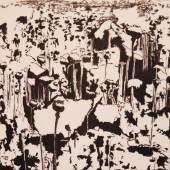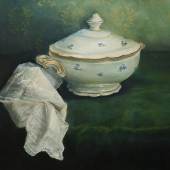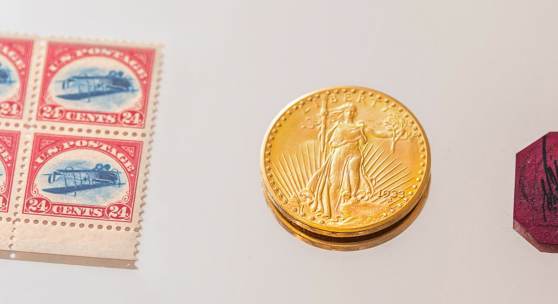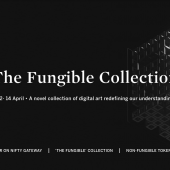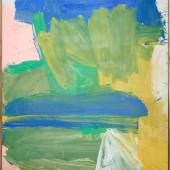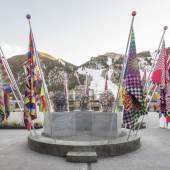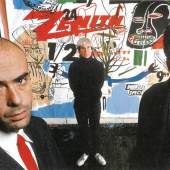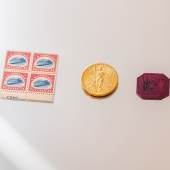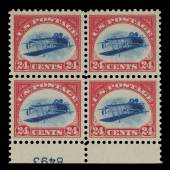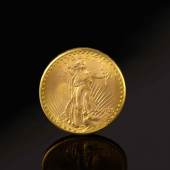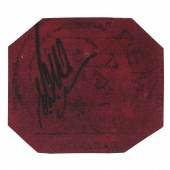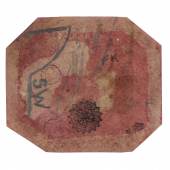Sotheby Auction
THREE TREASURES – COLLECTED BY STUART WEITZMAN
-
Auktion08.06.2021
One of the rarest coins in the collecting field, the 1993 Double Eagle (estimate $10/15 million) twenty-dollar coin is completely unique in that it is the only one of its kind that may be legally owned by a private individual. When Weitzman anonymously purchased the coin at Sotheby’s New York in 2002 for $7.59 million, it established a new world auction record for any coin at the time, nearly doubling the previous record. The auction was conducted on behalf of the United States Government following a landmark legal settlement, which for the first and only time, authorized the private ownership of this 1933 Double Eagle alone. At the conclusion of the sale and in an historic moment, the Director of the United States Mint signed a Certificate of Monetization turning the coin into legal United States tender – the first time the United States Government had ever monetized a coin in this way.
The 1933 Double Eagle has a uniquely captivating history which encapsulates large swathes of United States history and has been at the center of numismatic intrigue for more than 70 years. Known as the coin that took the US off the Gold Standard, 1933 Double Eagles were the last American gold coins struck and intended for circulation by the United States Mint but were never legally issued for use. Designed by the renowned sculptor Augustus Saint-Gaudens at the behest of President Theodore Roosevelt, its imagery of Liberty striding forward on the obverse, with an American eagle in flight on the reverse marks the apex of United States coin design. In 1933 President Franklin Roosevelt took the country off the gold standard in an effort to lift America’s tattered economy out of the Great Depression. Since they were never officially issued for use, all 1933 Double Eagle coins were ordered to be destroyed with exception of two examples set aside for the Smithsonian Institution. In 1937, several 1933 Double Eagles appeared on the market, which led to a Secret Service investigation in 1944 that deemed all newly discovered coins were stolen from the United States government and therefore illegal to own.
However, only weeks before the Secret Service investigation began in 1944, one of the 1933 Double Eagles was purchased and erroneously granted an export license. It entered the famed coin collection of King Farouk where it remained until 1954 when his collection was offered at auction by Sotheby’s, acting on behalf of the new Republic of Egypt. Upon learning of its presence in the sale, the United States Treasury successfully requested that the coin be withdrawn and the whereabouts of the coin remained a mystery until 1996 when it was seized during a Secret Service sting at the Waldorf-Astoria in New York. Following a five-year legal battle, which unearthed the long-forgotten and erroneously issued export license, the case was settled, and this single 1933 Double Eagle was permitted to be privately owned.
In 2005, ten more 1933 Double Eagles surfaced in the possession of the family of one of the individuals investigated in the 1944 Secret Service investigation and another legal battle ensued. More than a decade later, after a jury trial and appeals (to as high as the Supreme Court), 1933 Double Eagles were ruled property of the United States and therefore, with the exception of Stuart Weitzman’s example, can never be sold (following the litigation another 1933 Double Eagle was voluntarily surrendered to the US government).
THE BRITISH GUIANA ONE-CENT MAGENTA
No stamp is rarer than the sole-surviving example of the British Guiana One-Cent Magenta (estimate $10/15 million), a unique yet unassuming penny issue from 1856, which has been heralded as the pinnacle of stamp collecting for more than a century. Each of the four times it has sold at auction, it has established a new record price for a single stamp, last selling to Weitzman in 2014 at Sotheby’s for $9.48 million, nearly one billion times its original face value.
The British Guiana is equally notable for its legacy, having been rediscovered by a 12-year-old schoolboy living in South America in 1873, and from there passing through some of the most important stamp collections ever assembled. Its storied history starts in 1852, when British Guiana began receiving regular postage stamps manufactured in England by Waterlow & Sons; due to a clerical error in 1855, a shortage of the imported stamps threatened to disrupt the postal service throughout British Guiana and forced the postmaster to turn to the printers of the local Royal Gazette newspaper to commission a contingency supply of postage stamps for the following year: the one-cent black on magenta colored paper, a four-cent magenta, and a four-cent blue.
The sole-surviving example of the one-cent magenta was first rediscovered in 1873 when L. Vernon Vaughan, a 12-year-old schoolboy living with his family in British Guiana, found the stamp among a group of family papers bearing many British Guiana issues. A budding philatelist, Vaughan could not have known that the one-cent was unique, but he did know that he did not have an example and added it to his album. He would later sell the stamp for several shillings to another local collector.
-
12.04.2021 - 14.04.2021By Pak • 12- 14 April • A novel collection of digital art redefining our understanding...
-
20.04.2022ARTEXPO NEW YORK CELEBRATES ITS 45TH ANNUAL EDITION WITH A RENAISSANCE IN CONTEMPORARY AND FINE...
-
04.05.2018 - 08.05.2018(New York) April 25, 2018 – TEFAF, the not-for-profit foundation that organizes three art...
-
16.04.2024 - 15.09.2024Two stays in Italy inspired Willem de Kooning to bold experiments in his art, a new exhibition in...
-
17.04.2024 - 17.05.2024Marking 50 years of Sotheby's in the Belgian capital, an esoteric selling exhibition is on...
-
20.04.2024 - 24.11.2024Jeffrey Gibson on Representing the United States and Himself By Melissa Smith | Feb 16, 2024 From...
-
13.05.2024 - 15.05.2024Sotheby’s Sealed is thrilled to present this spectacular Mercedes-Benz 300 SL Alloy...
-
14.05.2024Warhol & Basquiat’s Collaboration Series Masterwork To Highlight Sotheby’s...
-
08.06.2021Auktion »
.


